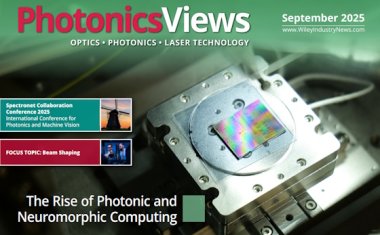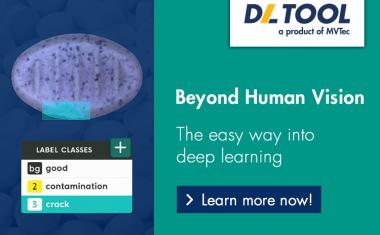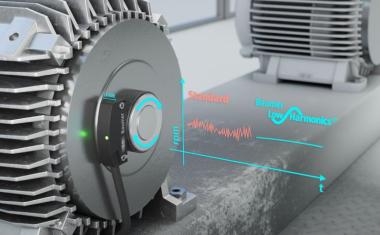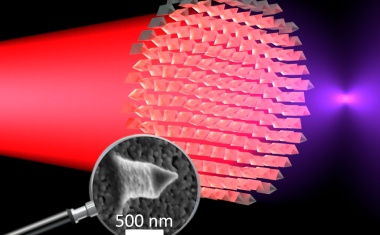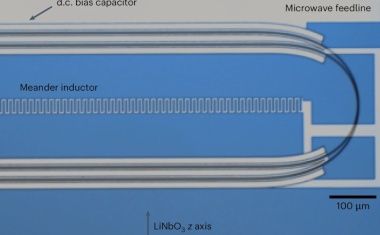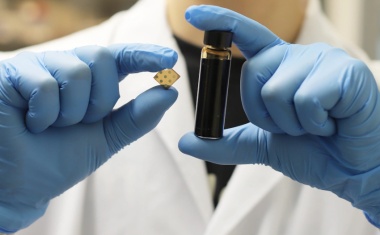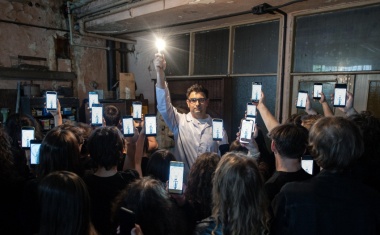New kind of a single-photon emitter
Ultrafast control of single-photon emitters in the two-dimensional material hexagonal boron nitride using laser pulses.
Single-photon emitters are an important building block for the applications of quantum technologies. Photons are an excellent means of transmitting data in a fast and secure manner. However, it is necessary to have a sound physical understanding of the structure of the single-photon emitter and how to control them. Therefore, a team of physicists from the University of Münster in Germany and Wrocław University of Science and Technology in Poland has undertaken the first systematic study of the ultrafast control of single-photon emitters in the two-dimensional material hexagonal boron nitride (hBN) using laser pulses.

Such two-dimensional materials continue to be the focus of many scientific studies. Graphene is one prominent example and, in 2010, a Noble Prize was awarded for the discovery and the initial analysis of its properties. “Hexagonal boron nitride – hBN in short – is a 2D material with particularly interesting properties”, explains Daniel Wigger from the Theoretical Physics Department of Wrocław Tech. “Among other things, hBN hosts single-photon emitters, which even work at room temperature, in contrast to many other systems that require extremely low temperatures.” Experts are convinced, that these single-photon emitters originate from impurity atoms, that is atomic defects or color centers within the hBN crystal.
The scientists took a closer look at these color centers, whose exact atomic structure is still unknown. They developed a comprehensive understanding of the dynamics within the color center inside the hBN crystal by combining their experiments with theoretical modelling. One of their focuses was on the detrimental impact of the environment the quantum dynamics. Microscopic systems are affected by different interactions with the environment, which manifest as external noise on varying time scales, for example, as slight colour fluctuations of the emitted photons. The quantum properties of such systems are, in particular, very sensitive to this noise. This can lead to decoherence, which results in the loss of quantum information stored in the system.
The team used ultrafast laser pulses to prepare and read out the quantum state of the atomic defect. “In simple terms, the applied technique works like a stroboscope,” says physicist Steffen Michaelis de Vasconcellos from the Institute of Physics and the Center for Nanotechnology at the University of Münster. “A first pulse creates a quantum state which, after a brief delay, is read out by a second pulse. By varying the time between the two pulses, it is possible to measure the change in the quantum state and thereby the decoherence.” In addition to this key experiment, the physicists undertook a detailed investigation into the spectrum of the emitters, that is, which color the emitter is generating.
They supplemented the experiments with computer simulations, which were run with the same parameters as the experiments. Special attention was paid to phonons – sound waves in the crystal – that can have a particularly detrimental influence. “Experiment and theory have provided a consistent picture in our study,” says Wigger. The scientists have, for the first time, not only considered the dynamic character of the emitter system but also the light spectrum, in order to understand the impact of these external influences on different time scales. Based on these results, perturbations can potentially be avoided in future applications and phonons can be integrated into technological applications as an additional type of quantum excitation. (Source: WWU)
Link: Quantum Optics & Nanophotonics, Westfälische Wilhelms-Universität Münster WWU, Münster, Germany


